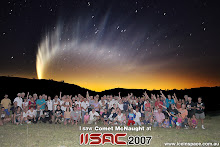
As mentioned previously I am a Tasmanian Aboriginal artist. Tasmania is the beautiful island
state lying to the south of eastern Australia. It is renowned for its scenery, mountains, lakes,
wild untamed rivers, beautiful beaches, unique animals etc. World travellers are all impressed
with the beauty of my island home. I have been fortunate enough to do some travelling myself, so
can verify this firsthand. The state of Tasmania includes Macquarie Island; therefore rather
than being the smallest, I say this makes Tasmania the largest Australian state! While this last statement may be debatable no one will deny that Hobart, where I was born, is one of the most beautiful harbour city in the world.
state lying to the south of eastern Australia. It is renowned for its scenery, mountains, lakes,
wild untamed rivers, beautiful beaches, unique animals etc. World travellers are all impressed
with the beauty of my island home. I have been fortunate enough to do some travelling myself, so
can verify this firsthand. The state of Tasmania includes Macquarie Island; therefore rather
than being the smallest, I say this makes Tasmania the largest Australian state! While this last statement may be debatable no one will deny that Hobart, where I was born, is one of the most beautiful harbour city in the world.
Anthropologists disagree as to the relationship of my people to mainland Aboriginals. At one
time we were considered to be a distinct separate race; then just a separate tribe. The present
opinion is probably between these two extremes. Certainly we are descended from the earliest
human arrivals in Australia, and being cut off by Bass Strait did not intermarry with the later
arrivals like our mainland cousins did. Our culture is similar theirs, which proves we are
closely related. Some say our language is similar to the language of the original aboriginal
inhabitants of Japan and we share a common genetic pattern with them. Certainly we have some oriental features; almond shaped eyes, high cheek bones and a long forehead. In recent years
some anthropologists see a close similarity between us & the Tolai people of Papua New Guinea.
As well as being similar in appearance, we also use shell necklaces for the same cultural
reasons as the Tolai & also sing in harmony in the style of Papua New Guineans unlike our
mainland cousins who are not renowned for their singing. Full bloods were a deep tan brown with a yellow tinge, shorter in statue than Europeans. Most have curly hair, our men having tighter curls than the women. In pre-European times our men had beards of tight ringlets. We have tiny ankles and wrists. The early European invaders considered us to be a good-looking well-formed people.
Our people were divided into 9 tribes. There were at least 5 dialects of our language. On the
west coast permanent villages of huts were built. Shellfish collected by the women and small
mammals and birds hunted by the men were a major part of the diet. Women also caught small
animals and collected plants. Coastal tribes made regular trips to off shore islands to hunt
seal and mutton birds. (Our people still make these trips. Some traditional foods are very
popular and such outings provide a continuing link to our culture.) Water craft were made from
bark & reeds. Incidentally Bass Strait is one of the roughest bodies of water in the world. Our
women made sturdy baskets for collecting food and carrying personal items in. Tools and
containers were made from wood, bone, stone, seaweed, bark, grass and sinew or tendons. We
produced the first known art in Australia.
This painting is an examples of Tasmanian Aboriginal art. More can be learned about it at
http://www.aboriginalarttreasures.com/tasmania.php It is entitled 'Hobart', my birthplace. If
you check out the web link it will show what the traditional symbols used represent. I hope you
like this modern version of ancient art.

2 comments:
Two words AMAZING ART!
I love Tasmanian Aboriginal art.
I must go there some day.
My dot painting gallery
Http://www.karoline-art.com
I also belong to this wonderful island state ‘Tasmanian’. But I am totally ignorant of Aboriginal artists of Tasmanian. I am a great fan of them & have a burning desire to meet them at least once. Please share some information about those artists with me here in this blog.
Aboriginal Art
Post a Comment